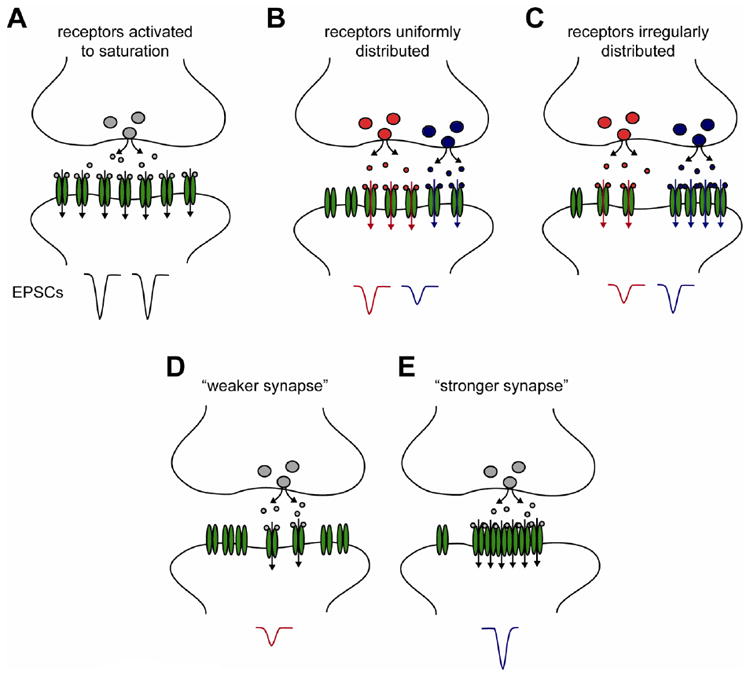Figure 1.

(A) Side-view of a synapse where a single release event activates all postsynaptic AMPARs (green), which are shown as randomly positioned. Vertical arrows indicate opened channels. Release from sites anywhere in the presynaptic active zone will elicit EPSCs (below) with little variance. (B) A synapse for which a single release event activates only a subset of randomly positioned receptors. A release event in the center of the synapse (in red) is likely to activate more receptors and trigger a more robust postsynaptic current than a release site located more peripherally (blue). (C) In contrast, if postsynaptic AMPARs distribution is not random, the local density of receptors at the release sites, not simply their number, will determine the amplitude of the EPSC elicited by a release event. Glutamate release aligned with a receptor-sparse region (red), will trigger a smaller EPSC than release aligned with denser region of the synapse (blue). Modulating the alignment of presynaptic release machinery with postsynaptic AMPARs, potentially via transsynaptic mechanisms involving the receptors themselves, is thus a potential mechanism to decrease (D) or increase (E) synaptic strength.
